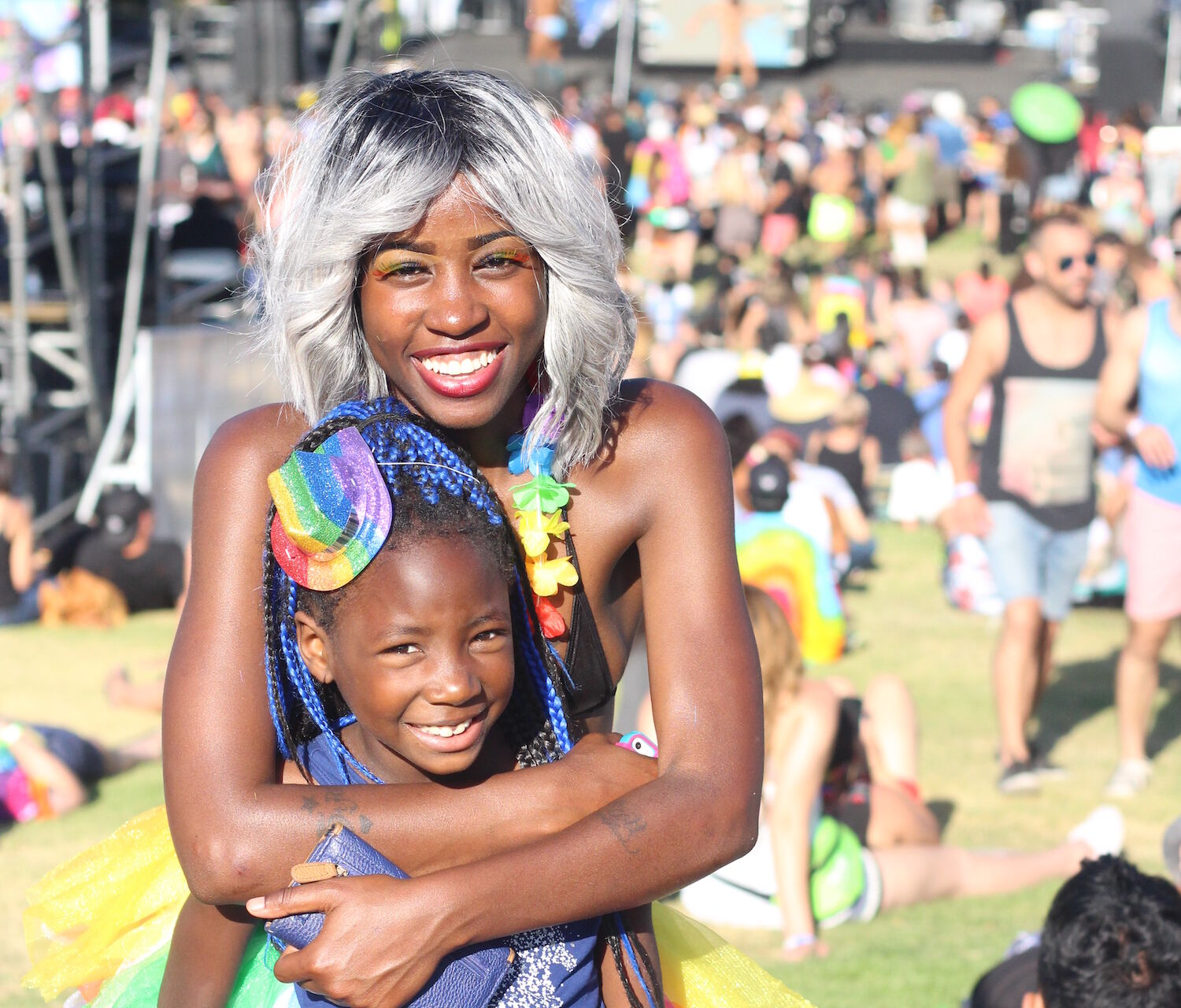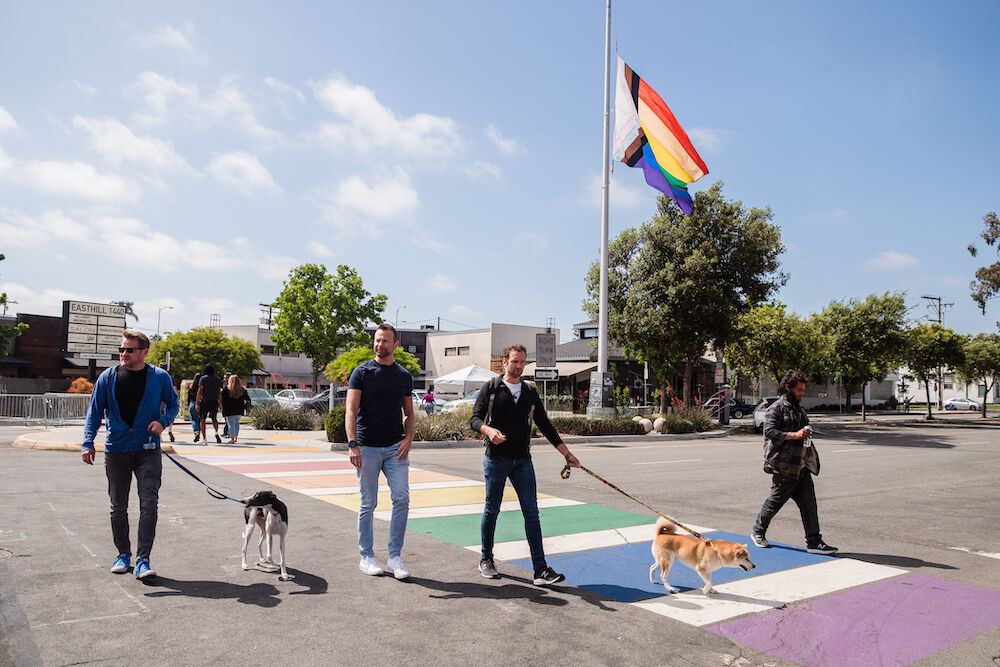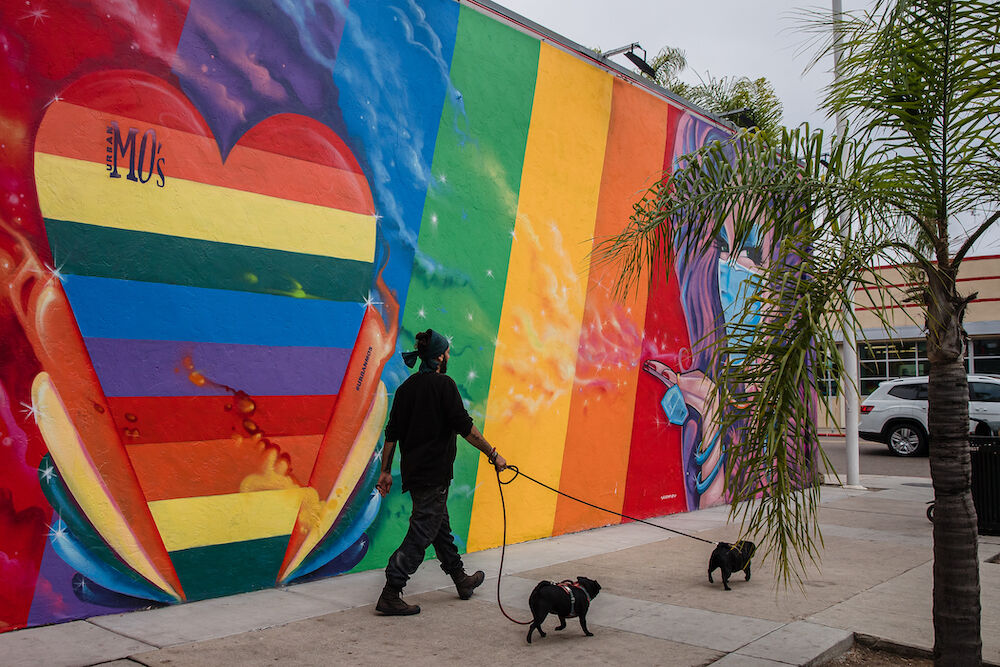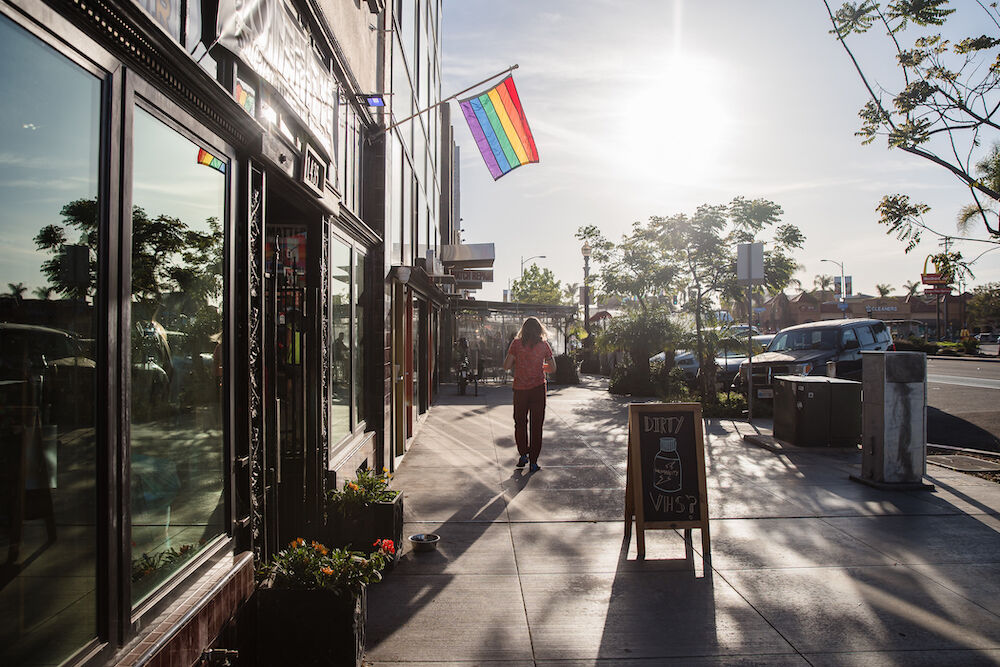
46 Years of Pride – main
Ariana Drehsler
San Diego’s Pride celebration has endured bad weather, threats of protest and violence, a tear gas attack, and for the second year in a row now, a global pandemic. Even so, the show must go on.
“There’s never been a missed year,” says San Diego Pride marketing and communications manager Alex Villafuerte. “Even on the years we were rained out, we still carried on.”
Last summer, COVID-19 restrictions required the event to be entirely virtual. This year, it’ll comprise a virtual Pride Live event streaming online and a handful of smaller in-person gatherings from Kearny Mesa to Carlsbad.
Villafuerte says the online and satellite events mean that Pride can reach beyond Hillcrest and the other downtown San Diego neighborhoods that have hosted the colorful parade and festival since 1975, making it accessible for even more San Diegans.
Pride is the largest civic event in the county, drawing more than double the number of participants as Comic-Con each year and generating millions of dollars for the local economy. It’s a celebration of lesbian, gay, bisexual, transgender, and queer people of all gender identities and sexual orientations, a reminder of the strides the LGBTQ community has made toward equality, and a rally against the pervasive discrimination they still face.
Welcome to the Gayborhood

The Hillcrest Pride Flag flies atop a 65-foot pole at Normal Street and University Avenue. This variation, called the Progress Pride Flag, includes additional stripes to specifically recognize the transgender community and people of color.
Ariana Drehsler
Today, Hillcrest is synonymous with San Diego’s queer community. Rainbow-striped pride flags hang from storefronts, homes, and on a 65-foot pole at Normal Street and University Avenue. The San Diego LGBT Community Center sits at the end of Harvey Milk Street, named in honor of the gay civil rights icon. Gay bars and restaurants with bustling patios dot the business district. Locals and tourists alike are more observably “out” here than elsewhere in San Diego.
But this wasn’t always the scene. Hillcrest became a residential neighborhood of affordable low-occupancy cottages and bungalows in the early 20th century. According to historian Walter Meyer, many members of the gay community were introduced to sunny San Diego through military service, especially during World War II.
“In the 1930s, the place to be gay was down on Broadway,” Meyer says. “If you went into the restaurant bar, you might meet another sailor. Anyone who served in the Pacific who was discharged here wasn’t going to take his new boyfriend home to Omaha.”
Meyer wrote the companion book to the San Diego History Center’s exhibit LGBTQ+ SD: Stories of Struggles and Triumphs, on view in Balboa Park through August 1. Before the pandemic, he hosted educational walking tours about Hillcrest’s queer history for school groups, tourists, and corporate teams.
San Diego’s oldest gay bar still in operation opened in 1934 as The Brass Rail. It moved from downtown to Hillcrest in 1963 and rebranded as simply The Rail in 2016. The club has been mostly closed since March 2020.

Pride – rainbow mural
Ariana Drehsler
By the ’60s and ’70s, many Hillcrest homes were starting to become run-down. Affordable rent and a burgeoning LGBTQ social scene brought gay-led gentrification to the neighborhood. When the Sears department store along University moved to Mission Valley in the ’80s, the area known as the Uptown District opened up to even more local, gay-owned businesses.
Seeking Sanctuary
Hillcrest’s evolution as an LGBTQ haven happened alongside the gay civil rights movement and the AIDS epidemic. In those days, being out could cost someone their job or even their home, so an inclusive community was a welcome refuge.

Urban Mo’s Bar & Grill
“There were unnamed bars, no signage,” Meyer says. “You just opened the door to what looked like an abandoned building and there’d be a disco inside. Even the bars were closeted.”
Those in the know would use backdoor entrances to Hillcrest dance clubs. Large store windows facing the street or even outwardly visible pride flags were uncommon. Neighborhood bookstores and coffee shops advertised in gay business directories to signal to patrons that they would be safe there.
Meyer tells the story of a naval officer who would park at the Pernicano’s pizza restaurant on Sixth Avenue and walk to the gay clubs so he’d have an alibi ready if anyone recognized his car. Another friend attended his first Pride parade in the ’70s dressed as a circus clown.
“He said, ‘I was the most visible person there, but no one saw me,’” Meyer recalls. “It was the most liberating experience.”
Shifting Perspectives
The 1969 Stonewall uprising in New York City brought the fight for LGBTQ equality into the national conversation.
The shift in San Diego from a closeted subculture to a celebrated recognition of individual identity has been slow but steady. The San Diego History Center’s photographic exhibition, created in partnership with the Lambda Archives of San Diego, is the first of its kind to focus exclusively on the local queer experience.
Meyer suspects that greater social acceptance and online dating has made Hillcrest less of a hideaway and more an enclave. Big-name companies like Wells Fargo and Ace Hardware are allies in the neighborhood. San Diego Pride counts Qualcomm, Sony, and Bud Light among its major sponsors.

University Ave. in Hillcrest
Despite historic gains, the community still faces challenges, according to Villafuerte. Among them: the push for a federal Equality Act, which would update the Civil Rights Act of 1964 to expressly protect LGBTQ people in every state from discrimination in public spaces like stores and restaurants.
It passed the House in February, and as of press time is under consideration by the Senate. The bill will be among the topics discussed at the Spirit of Stonewall Rally on July 16.
PARTNER CONTENT
“It helps inspire us and educate us about the issues the community is still facing,” Villafuerte says












